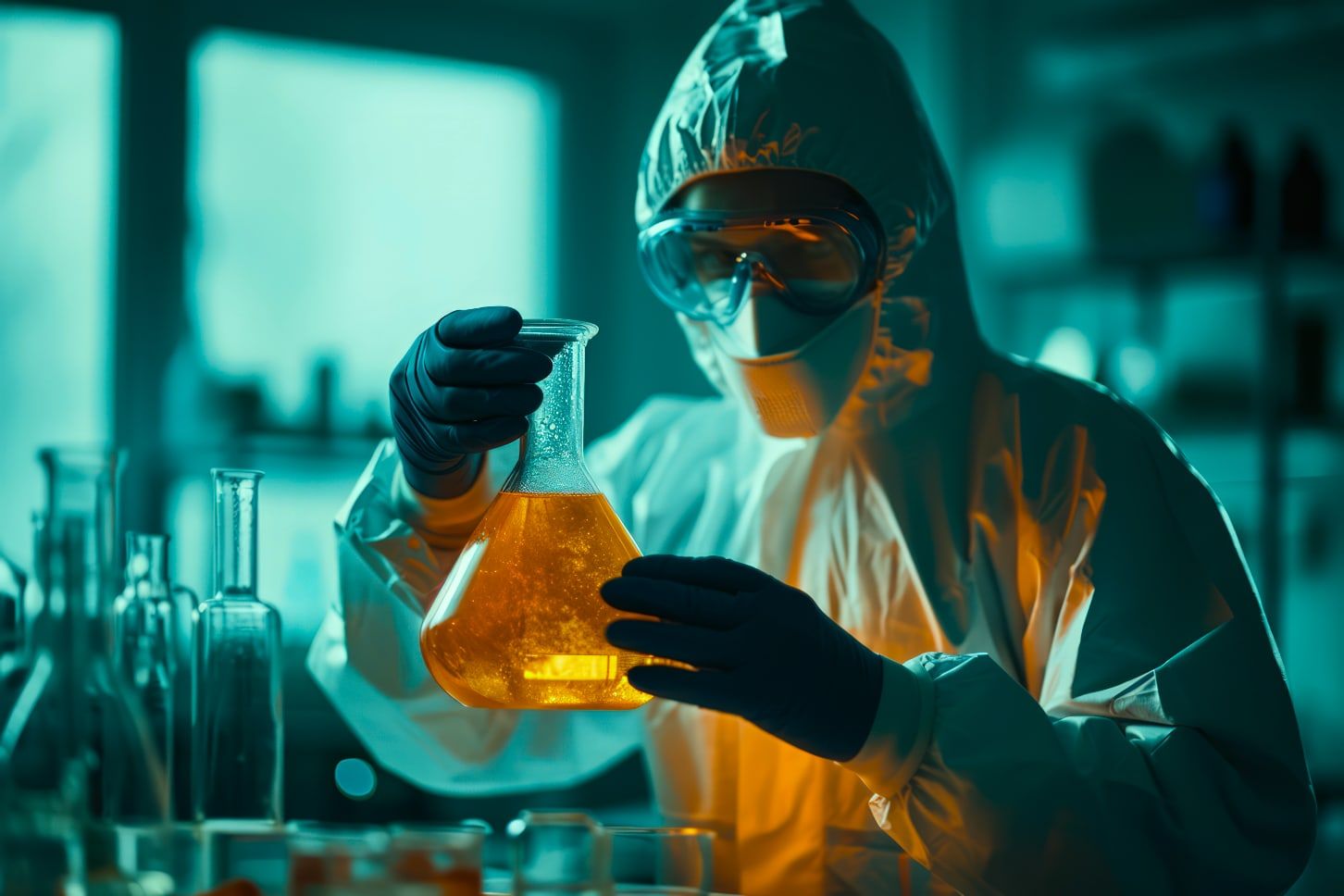-
CAS100-42-5
-
Structural formula
C₈H₈
Remove styrene from the exhaust air
What is styrene?
Styrene is a colourless to yellowish liquid with a sweet odour that belongs to the group of aromatic hydrocarbons. It is an important building block for the production of polystyrene and other copolymers used in a variety of applications such as packaging, insulation and consumer goods. Styrene is known for its polymerisation capability and is widely used in the plastics industry.
Evolution
Styrene is mainly produced by the dehydrogenation of ethylbenzene, a process that takes place on a large scale in the petrochemical industry. This chemical process requires high temperatures and special catalysts to convert ethylbenzene into styrene. In addition to petrochemical production, styrene can also be released during the combustion of organic material and tobacco, albeit in smaller quantities.
Recognition
Styrene is a colourless to yellowish liquid with a characteristic sweet, aromatic odour that is perceptible even in low concentrations. It is highly volatile and can be easily dispersed in the air. The pungent odour is often the first indication of the presence of styrene in the environment. Skin contact can cause redness and irritation, while inhalation of the vapours can cause eye, nose and throat irritation, as well as headaches and dizziness.
Limit values
In Germany, the limit values for styrene are regulated by the Technical Instructions on Air Quality Control (TA-Luft) and the occupational exposure limit values (OEL). The OEL for styrene is 20 ppm (parts per million) or 86 mg/m³. These limit values are intended to ensure that the concentrations in the workplace do not cause any damage to health.
Hazards
Health: tyrene can cause skin and eye irritation. Inhalation of vapours may cause respiratory irritation, headaches and dizziness. Long-term exposure can damage the central nervous system and may be carcinogenic.
Environment: Styrene is toxic to aquatic organisms and may disturb the ecological balance if released. It is poorly biodegradable and can contaminate soil and water.
Economic damage: tyrene is highly flammable and can cause fires and explosions if handled improperly, which can cause considerable damage to property.
The oxytec Purification Technology
For many organic pollutants, we offer energy-saving and clean technologies for neutralisation, which we combine in multi-stage plants. In order to achieve a reduction below the limit values, not only the dimensioning of the respective purification stage but also the sequence of the technologies is decisive, as they have different physical effects on the molecules. Below we present some of our purification modules.
CWA
Alternative technologies
In addition to our solutions, there are other technologies such as conventional activated carbon filters and simple ventilation systems. However, these often have disadvantages such as high energy consumption, limited cleaning performance, large space requirements, long lead times and high investment costs.
Advantages of the oxytec solution
- Compact design: Small footprint compared to traditional systems
- Low operating costs, therefore fast amortisation
- Environmentally friendly: Minimal environmental impact thanks to innovative technologies
- Efficient styrene reduction: High efficiency thanks to high cleaning levels with minimal energy consumption
